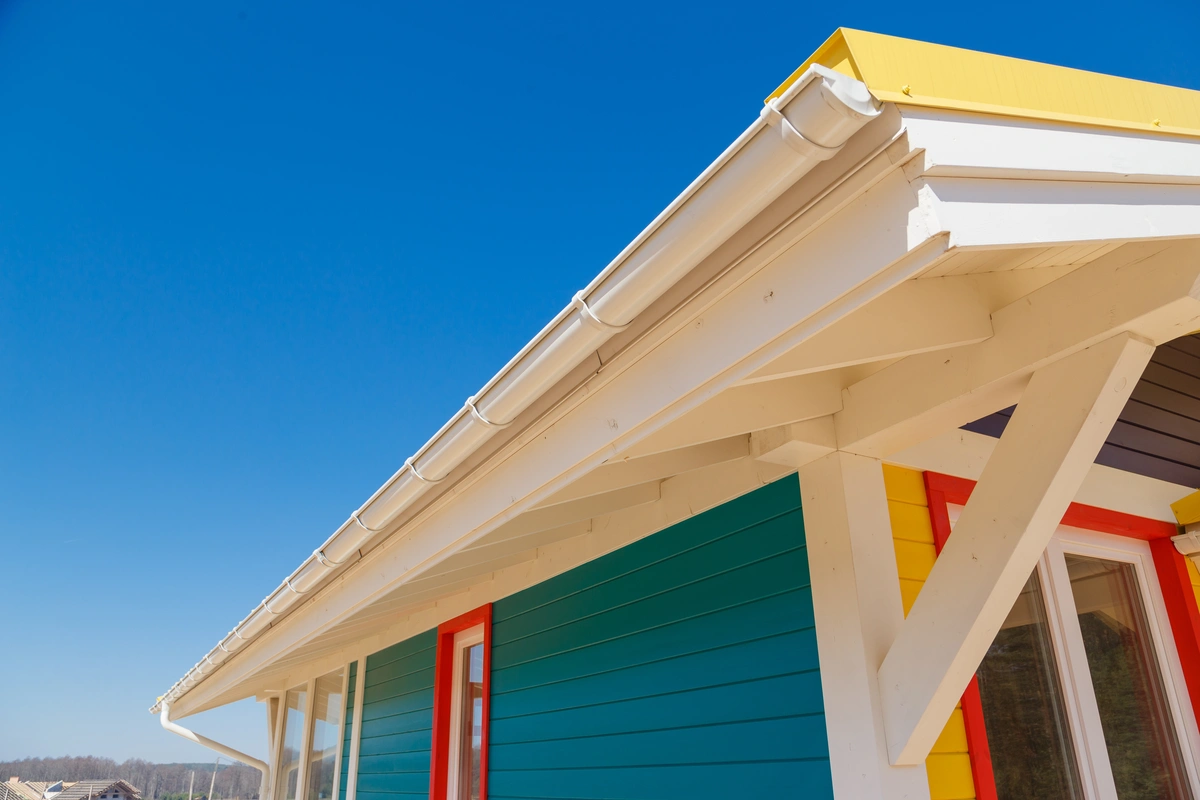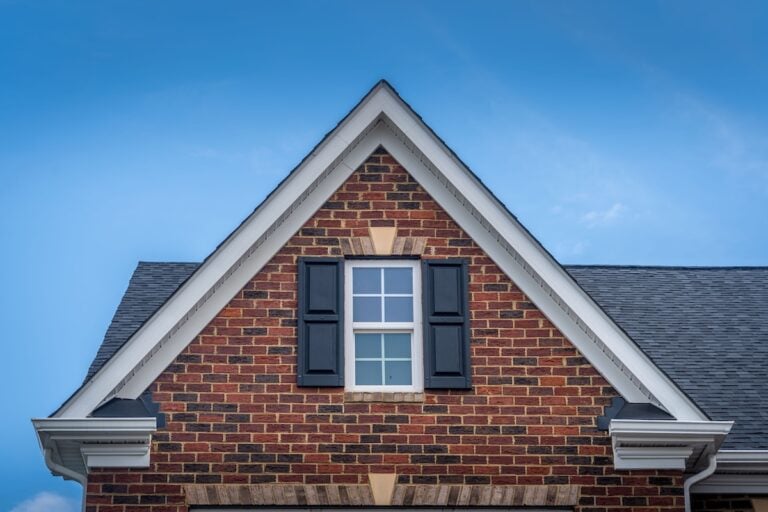When it comes to maintaining and beautifying your home, there are numerous components to consider—one of which is the fascia. But what is fascia on a house, and why is it important? Our guide is designed to explore everything you need to know about fascia, including:
- Its function
- Various styles
- Installation
Whether you’re a seasoned homeowner or a first-time buyer, understanding fascia is crucial for the longevity and aesthetics of your home.
What Is Fascia?

Fascia is a critical component of your home’s exterior architecture. It is a long, straight board that runs along the lower edge of the roof, directly behind the gutters. The fascia is typically attached to the ends of the roof trusses and serves as a finishing edge that seals off the roof and protects the interior from the elements.
Functions of Fascia
Understanding the function of fascia helps in appreciating its importance. Here are the key roles fascia plays in your home:
- Protection: One of the primary functions of fascia is to protect your home from the elements. By sealing the roof’s edge, fascia prevents water, snow, and wind from penetrating the roofline and causing damage. This protection is essential for maintaining the structural integrity of your home.
- Aesthetic Appeal: Fascia contributes to the overall aesthetic appeal of your home. It provides a clean, finished look by covering the rough edges of the roof and enhancing curb appeal. With various styles and materials available, you can choose a fascia that complements your home’s design.
- Structural Support: Fascia also supports the gutters by providing a sturdy base to which they can be attached. This support ensures that the gutters function correctly, directing water away from your home and preventing damage to the foundation and landscape.
- Pest Prevention: By sealing off the edges of the roof, fascia acts as a barrier to pests such as insects, birds, and rodents. This feature helps in keeping unwanted visitors out of your attic and roof spaces.
4 Materials Used for Fascia
Fascia boards come in various materials, each with its own set of pros and cons. Here are some common materials used for fascia:
1) Wood
Wood is a traditional material for fascia and offers a classic, natural look. However, it requires regular maintenance such as painting or staining to prevent rot and decay. Common types of wood used for fascia include cedar, pine, and redwood.
2) Vinyl
Vinyl fascia is low-maintenance and resistant to rot, insects, and weathering. It is available in various colors and styles, making it a versatile option for homeowners. However, it may not offer the same aesthetic appeal as wood fascia.
3) Aluminum
Aluminum fascia is durable, lightweight, and resistant to corrosion. It is often used in combination with aluminum siding and gutters for a cohesive look. While aluminum fascia is long-lasting, it may dent or bend under pressure.
4) Composite
Composite fascia is made from a blend of wood fibers and plastic, offering the best of both worlds. It is durable, low-maintenance, and available in a variety of colors and finishes. Composite fascia is an excellent choice for homeowners seeking a balance between aesthetics and functionality.
Styles of Fascia
Fascia boards come in various styles, allowing homeowners to choose a look that complements their home’s design. Here are some popular styles of fascia:
- Flat Fascia: Flat fascia is the most common style and features a simple, straight board that runs along the roof’s edge. It offers a clean, minimalist look that works well with various architectural styles.
- Stepped Fascia: Stepped fascia features multiple levels or steps, adding depth and visual interest to the roofline. This style is often used on homes with more elaborate architectural details, such as Victorian or Tudor designs.
- Mitered Fascia: Mitered fascia features angled joints that create a seamless, cohesive look. This style is ideal for homes with complex rooflines and multiple angles, as it provides a polished, professional finish.
- Crown Molding Fascia: Crown molding fascia incorporates decorative molding along the top edge of the fascia board. This style adds a touch of elegance and sophistication, making it a popular choice for upscale homes.
Installation and Maintenance
Proper installation and maintenance of fascia are crucial for ensuring its longevity and functionality. Here are some tips for installing and maintaining fascia:
Installation Tips
- Ensure that the fascia board is level and securely attached to the roof trusses.
- Use corrosion-resistant nails or screws to prevent rust and deterioration.
- Seal all joints and edges with caulk to prevent water infiltration.
- Install drip edge flashing along the top of the fascia to direct water away from the roofline.
Maintenance Tips
- Inspect the fascia regularly for signs of damage, such as rot, cracks, or peeling paint.
- Clean the gutters and fascia periodically to remove debris and prevent water buildup.
- Repaint or stain wood fascia every few years to protect it from the elements.
- Replace damaged or deteriorated fascia promptly to prevent further damage to your home.
Common Issues with Fascia
Despite its importance, fascia is susceptible to various issues that can compromise its functionality and appearance. Here are some common problems homeowners may encounter with fascia:
- Rot and Decay: Wood fascia is particularly vulnerable to rot and decay, especially in areas with high moisture levels. Regular maintenance, such as painting or staining, can help prevent these issues.
- Pests: Pests such as insects, birds, and rodents can cause damage to fascia by nesting or burrowing. Sealing all joints and edges can help keep pests at bay.
- Water Damage: Improperly installed or maintained fascia can lead to water infiltration, causing damage to the roofline and interior of the home. Ensuring proper installation and regular maintenance can prevent water damage.
- Warping and Cracking: Fascia boards can warp or crack due to exposure to extreme temperatures and weather conditions. Using high-quality materials and proper installation techniques can help minimize these issues.
Fascia and Your Home’s Value
Investing in high-quality fascia can have a positive impact on your home’s value. Here are some ways fascia can enhance your home’s marketability:
- Improved Curb Appeal: A well-maintained fascia contributes to the overall curb appeal of your home. Potential buyers are more likely to be impressed by a home with a clean, finished roofline.
- Increased Longevity: High-quality fascia can extend the lifespan of your roof and protect your home from the elements. This durability is an attractive feature for potential buyers, as it reduces the need for costly repairs and replacements.
- Enhanced Energy Efficiency: Properly installed fascia can help improve your home’s energy efficiency by sealing gaps and preventing drafts. This benefit can lead to lower energy bills and increased comfort for homeowners.
Choosing the Right Fascia for Your Home
When selecting fascia for your home, consider the following factors:
Material
Choose a material that meets your needs in terms of durability, maintenance, and aesthetics. Wood, vinyl, aluminum, and composite fascia each have their own set of advantages and disadvantages.
Style
Select a fascia style that complements your home’s architectural design. Flat, stepped, mitered, and crown molding fascia each offer a unique look that can enhance your home’s appearance.
Color
Choose a color that coordinates with your home’s exterior color scheme. Many fascia materials are available in a variety of colors, allowing you to create a cohesive look.
Budget
Consider your budget when selecting fascia. While higher-quality materials may have a higher upfront cost, they can offer greater durability and lower maintenance requirements in the long run.
Your Local Fascia Experts

Fascia is a crucial component of your home’s exterior, providing protection, structural support, and aesthetic appeal. Investing in high-quality fascia can enhance your home’s curb appeal, increase its value, and protect it from the elements. Whether you’re building a new home or renovating an existing one, choosing the right fascia is essential for ensuring your home’s longevity and beauty.
If you’re considering updating your home’s fascia or have any questions about the process, don’t hesitate to consult with a professional contractor at Palladium Roofing. We can provide expert advice and guidance to help you achieve the best results for your home.





